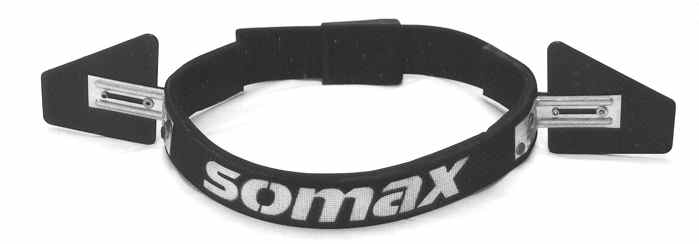Swimming
Somax has worked extensively with swimmers since 1985, when the head coach of the UC Berkeley Men's Team asked Somax to help develop a new stretching program for his swimmers.
Somax performance specialists worked 1500 hours over two and a half years carefully measuring the ranges elite swimmers went through underwater while swimming, as well as measuring the ranges of many elite and Olympic swimmers throughout the United States. Our experts found that most swimming stretches ignore the ranges the joints go through underwater.
Somax researchers found 20 critical ranges for each stroke, as well as the minimum number of degrees needed for efficient swimming. The best swimmers were found to have the greatest flexibility in these 20 ranges.
Hip Rotation
While analyzing underwater tapes of elite swimmers, Somax specialists also discovered that the power in swimming really comes from the hip muscles, and not from the arms. This finding was immediately confirmed when advancing the timing and increasing the speed of hip rotation reduced stroke count by 20% or more.
Return to Berkeley
Somax finished its consulting with Berkeley in the fall of 1987. In the spring of 1988, the Berkeley men's coach asked Somax to return to Berkeley to analyze one World-Record holder, as he had been losing races in the 100m free, for which he held the five fastest times in the world.
Soviet Union
In 1991 Gennadi Touretski, head coach of the Soviet National Swim Team asked Somax to help his swimmers with their flexibility. After adopting the Somax stretching program, the team then went on to win the European Championships and most of the sprint medals at Barcelona in 1992.
Colorado Springs
Somax was asked to work with 8 elite swimmers in Colorado Springs in August 1995 who were preparing for the 1996 Olympics in Atlanta. Computer analysis conducted by researchers in Colorado Springs showed that swimmers who increased the acceleration of their hips doubled their peak hand force output.
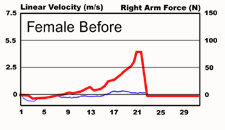 |
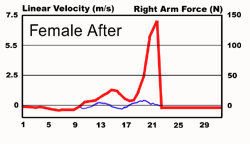 |
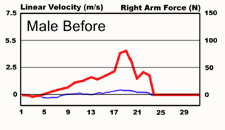 |
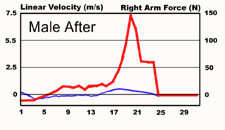 |
These graphs show that swimmers who increased the acceleration of their hips doubled the peak hand force (heavy solid line) they applied to the water after just one week of Somax training. You can see that neither swimmer produced much force until after they rotated their hips. The female sprinter was able to advance the timing of her hip rotation (thin, broken line) and thus doubled her insweep peak. The male sprinter delayed his hip rotation, and his initial hand force output was less. Then doubled his peak force as he accelerated his hips. The female sprinter (Amy van Dyken) won four Gold Medals and the male sprinter (Jon Olson) won two Gold Medals at Atlanta.
Stanford
Because of its work at Colorado Springs, head Stanford Women's coach Richard Quick asked Somax to work with eight of his top freestylers and backstrokers in the fall of 1995. Tests conducted by assistant coach Ross Gerry showed that the Somax-trained swimmers were swimming faster than the other Stanford swimmers three months later. Stanford went on to win the NCAA's in the spring of 1996 by 80 points. The prior year it won by 19 points.
National Teams
With its string of successes with elite swimmers, Somax has developed a multi-year national team program that consists of yearly camps or clinics followed by bi-weekly stroke analysis on the Internet. Microfiber Reduction is also be provided for World Championship and Olympic teams as part of this program. For details, please see our National Team Program.
Training Aids
From its 12 years of research and working with swimmers from beginners to World Record holders, Somax has invented some unique training aids for swimmers.
|
The POWERBELT (pat.pend.) is a pair of fins that strap onto the hips and provide resistance to hip rotation and undulation, the real source of power in swimming.
KICKERS (pat.pend.) are a unique kick training aid that increases the strength of the leg muscles. Somax training aids are available only to swimmers who complete its camps, clinics or individual programs.
Microfiber and Tension Reduction
Swimming requires the greatest overall flexibility of any sport. World Record holders are characterized by enormous flexibility in ranges specific to their stroke. Microfiber Reduction is a special form of connective tissue massage developed by Somax to improve flexibility far beyond what stretching alone can do. Tension Reduction is a special program developed by Somax to reduce tension in specific muscle groups. It is not uncommon for swimmers to improve their flexibility with Microfiber and Tension Reduction 50-300% beyond what they can achieve with stretching.
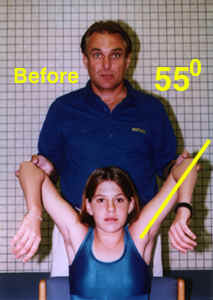 |
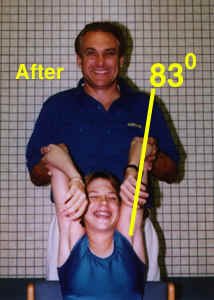 |
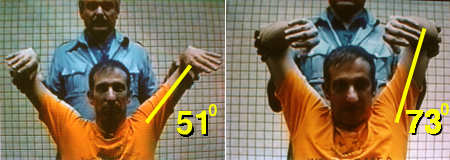 |
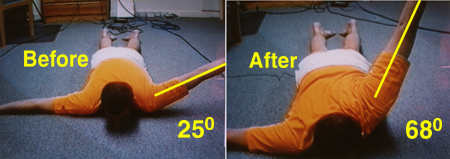 |
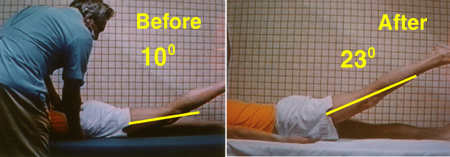 |
Reduction in Swim Times
With the Somax program of Microfiber Reduction and stroke correction, swimmers have reduced their times 3.1 to 18%, won 43 Gold Medals and one NCAA Championship, and have set 11 World Records.
Category |
Age |
Event |
Before |
After |
Imp. |
% Imp. |
Masters |
35-40 |
200y Fly |
Nationally |
Ranked |
5.15 |
3.4% |
51 |
2 Miles |
63:31 |
55:08 |
8.23 |
13.1% |
|
Senior |
18 |
100y Free |
47.00 |
45.30 |
1.70 |
3.6% |
Age Group |
16 |
100y Free |
63.3 |
61.1 |
2 |
3.1% |
12 |
50y Free |
28.45 |
25.94 |
2.51 |
8.8% |
|
50y Back |
34.96 |
31.74 |
3.22 |
9.2% |
||
50y Breast |
36.50 |
32.99 |
3.51 |
9.6% |
||
50y Fly |
32.24 |
29.39 |
2.85 |
8.8% |
||
100y IM |
1:13.41 |
1:06.03 |
7.39 |
10% |
||
100y Free |
1:11.38 |
59.16 |
12.22 |
17.1% |
||
100y Back |
1:20.05 |
1:10..94 |
9.11 |
11.3% |
||
100y Breast |
1:25.66 |
1:13.99 |
15.67 |
18.3% |
Articles
You can order Somax articles on its research and methods measuring and stretching stroke-specific ranges of motion.
Camps, Clinics, Individual Programs
Somax offers clinics, residential camps, and individual programs. The individual programs go up to Level V for professional and Olympic swimmers.
Internet Stroke Analysis
Swimmers who make the most progress after a camp or clinic are the ones who can see their underwater stroke at least twice a month with analysis. With the advent of the World Wide Web, we can download videos you send us (we can recommend an inexpensive attachment for most camcorders that will enable you to tape underwater while standing on the deck) onto this site with analysis so that you can sit at your computer and see your stroke expertly analyzed. The cost of each analysis for elite camp graduates is $900 with a 25 bi-weekly analyses minimum, for a total of $22,500, which is payable in advance and is not refundable. The cost of each analysis for our group and private camp graduates is only $900 per analysis, with a minimum of ten analyses for a total of $9000, which is also payable in advance and non-refundable..
Schedules and Appointments
Please contact us to discuss our programs and schedule appointments. See also What's New , Hidden Secrets and Elite Swim Camp.

